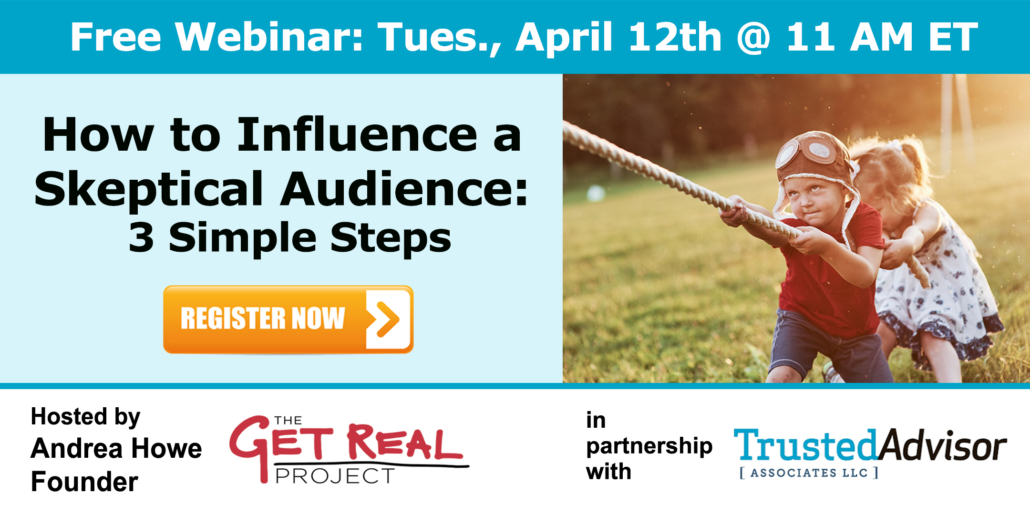 I recently got to meet Stephanie Olexa, a renaissance woman whose most recent incarnation is as an executive coach, at her company Lead to the Future. She has quite a bit to say about trust, and about two organizations in particular. Here’s our conversation.
I recently got to meet Stephanie Olexa, a renaissance woman whose most recent incarnation is as an executive coach, at her company Lead to the Future. She has quite a bit to say about trust, and about two organizations in particular. Here’s our conversation.
Charlie Green: Stephanie, you’re hard to pigeonhole. You’re an author, teacher, entrepreneur, PhD, patent-holder, scientist, professor, angel investor – and that’s not even half of what you do. How did you come to be so multi-faceted?
Stephanie Olexa: You might say I haven’t figured out what I want to do when I grow up. But in reality, I followed my curiosity. I started as a teaching and research scientist in a medical school, then evolved to work in the business of science at two Fortune 100 companies, then jumped into entrepreneurship by forming my own company in a scientific field, followed by a short time applying business principles to nonprofit organizations and now using everything I learned along my journey to work as an executive coach, consultant and teacher.
C. You and I met through Trust Across America, and we got to talking about the issues of increasing trustworthiness in business. You had a fascinating story about how decisions get made in a Pennsylvania company you know; could you tell us about that?
S. I met one of the co-owners of the business at a dinner sponsored by the Delaware Valley Family Business Center. (I asked, but he prefers not to be mentioned by name or company).
He, his brother and brother in law are equal owners of the company and equally share the title of President. All major decisions are made by consensus. Of course this goes against everything I learned in Business school so my curiosity was piqued. I asked him to describe their decision making process.
They have a conference room in the company with a basket at the door. The word “ego” is on the basket. This, he said, is to remind everyone to leave their egos at the door. Also in the room is a sign with the company core values. For every decision, they ask which alternative best meets their core values. When he told me that after thirteen years they never had a disagreement there was a calm and peaceful look on his face. I wanted to hug him!
C. The ability to manage like that – doesn’t that come from a homogeneous culture? Isn’t that virtually impossible to replicate?
S. First, I believe that business leaders are responsible for creating and maintaining the culture and that the culture must be based on shared core values. It’s not impossible to replicate, but it is hard to maintain and takes commitment.
C. This sounds like a small, private company. Can you really scale up this kind of management to bigger companies?
S. It is a private company, but not small. They have over 370 retail outlets spanning Eastern United States from Florida to Maine, with over 5000 employees. Layer on top of the size the challenges of leading remote teams and it is even more impressive.
C. Wow. So, how do you see what’s going on here? What makes it work?
S. It works because the leaders have consensus on their core values, the courage to live in accordance with them, and the commitment to demand that the business is managed in a way that promulgates them.
C. So, why can’t we scale up larger companies in the same way? Or can we?
S. We can. I believe that we need to have the leaders in those companies to commit to shared values and to be proud of those values. The values can’t be in a strategic plan on a shelf but have to be demonstrated every day.
C. What are some of the benefits of increased trust in business that you see?
S. The literature has statistics on financial benefits but I have witnessed the human benefits, happiness, peacefulness, generosity, compassion and caring. Trust in business spills over into trust in families, industries and communities.
C. Are there some other examples that come to mind that illustrate the trust opportunities in business?
S. I ran my company, a network of analytical labs, for twenty years. It was built on shared core values. We always told employees that if they made a mistake in a test, the problem could be solved but if they hid the problem there could be long term issues. Mistakes of the hands can be fixed but mistakes of the heart were not tolerated.
A few years ago we hired a young woman right after her graduation with a degree in Microbiology. She was near the end of her six month training in a test for total coliforms in drinking water. The method has strict quality control requirements but this is a test that is dependent upon the analyst looking at the results and recording them in a lab computer.
One Saturday morning this analyst saw that the QC requirement failed. The correct thing to do was to invalidate all forty samples and recollect them. She was alone in the lab and could have easily just checked the box that everything was ok. She didn’t. She called her supervisor at home, who then called me. We had to call all of the customers and send out two collecting teams to get new samples and run them that day. The expense of redoing the work was really high and the young analyst knew it. I thanked her for her honesty. Not one employee complained about the inconvenience or increased work.
But the best part is that the following month the young employee was voted employee of the month by her peers, citing her courage and honesty. They wanted her on the team. So what was the benefit to me of the trust in the company? I had no doubt that every employee would do the right thing even if nobody was watching.
C. This is timely; I’m just reading a 10-year old book, McKinsey’s Marvin Bower, wherein author Elizabeth Haas Edersheim describes the same utter devotion to values-based management that he instilled in McKinsey. I suspect Bower would completely agree with you what you’re saying, and I’ll note that while McKinsey was far higher visibility, your friend’s organization is larger than McKinsey was at the time.
S. Values-based management is not just a pretty phrase.
C. Not at all. Stephanie, thanks so much for taking time to speak with us, and best wishes to you. Where can people reach you?
S. My website is Lead to the Future, and my email is [email protected]


 In my last post,
In my last post,  I recently got to meet
I recently got to meet  This is the final post in a four-part series on Fear in Selling. In the
This is the final post in a four-part series on Fear in Selling. In the  I was
I was  Yesterday I wrote about
Yesterday I wrote about